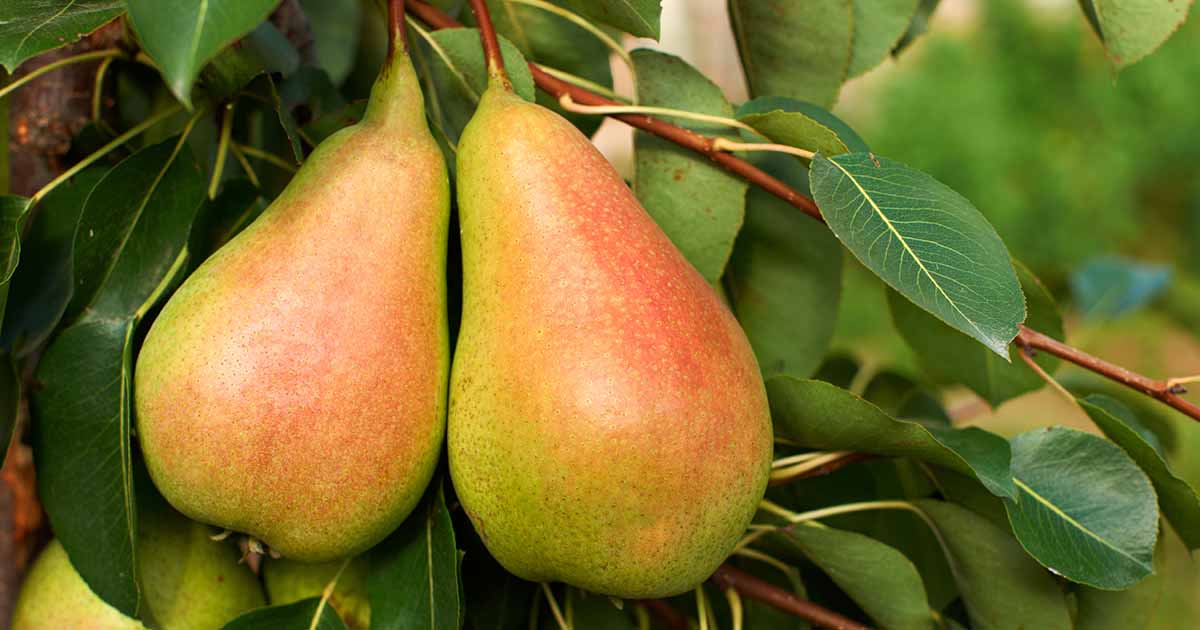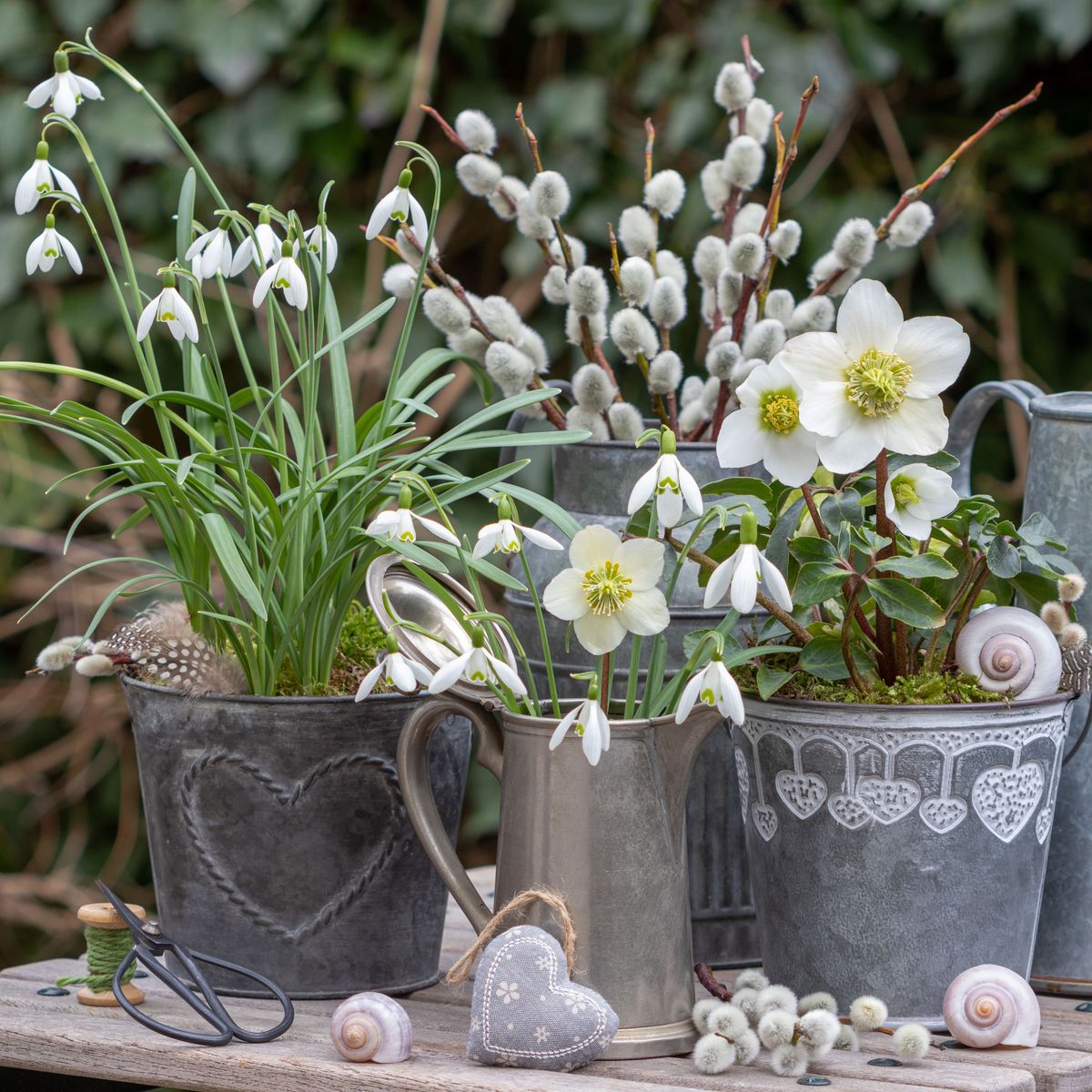I’ve found pears are one of those fruits that are getting harder and harder to find fresh at the grocery store without tasting mealy or flavorless and being hard as a rock.
The solution? Plant a few trees in your own yard.
Why do I say “a few”? Because most pears are not self-fertile, which means they need a pal for cross-pollination.
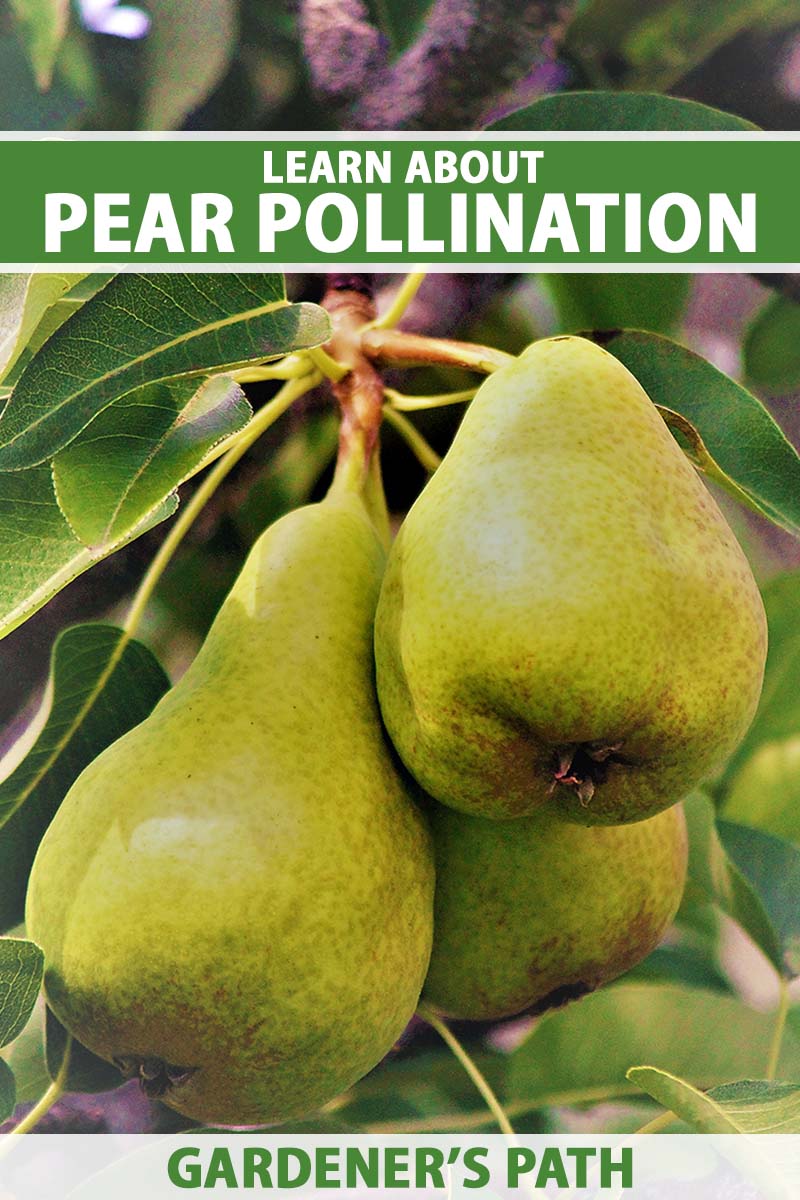
We link to vendors to help you find relevant products. If you buy from one of our links, we may earn a commission.
The two most common types for home growing are European (Pyrus communis) and Nashi or Asian (P. pyrifolia). They can pollinate each other, assuming they blossom at the same time.
If you’ve ever grown apples or you’re familiar with their pollination, the process is extremely similar.
Just like apples, some pears are self-fruitful, or at least partially so. Others are sterile and can’t pollinate other trees.
I know I’ve just made this sound kind of complicated, but it’s really not. This guide will answer all of your questions and even help you find a few recommended pairings.
Here’s what’s coming up:
Now, before we jump in, don’t overthink it. Pollination is more of a concern for large-scale growers.
Those of us who dabble in home growing will usually find that as long as a neighbor within a few blocks has a pear, things will work themselves out.
And one of the nice things about living in urban and suburban areas is that you can bet someone nearby will be growing a similar tree.
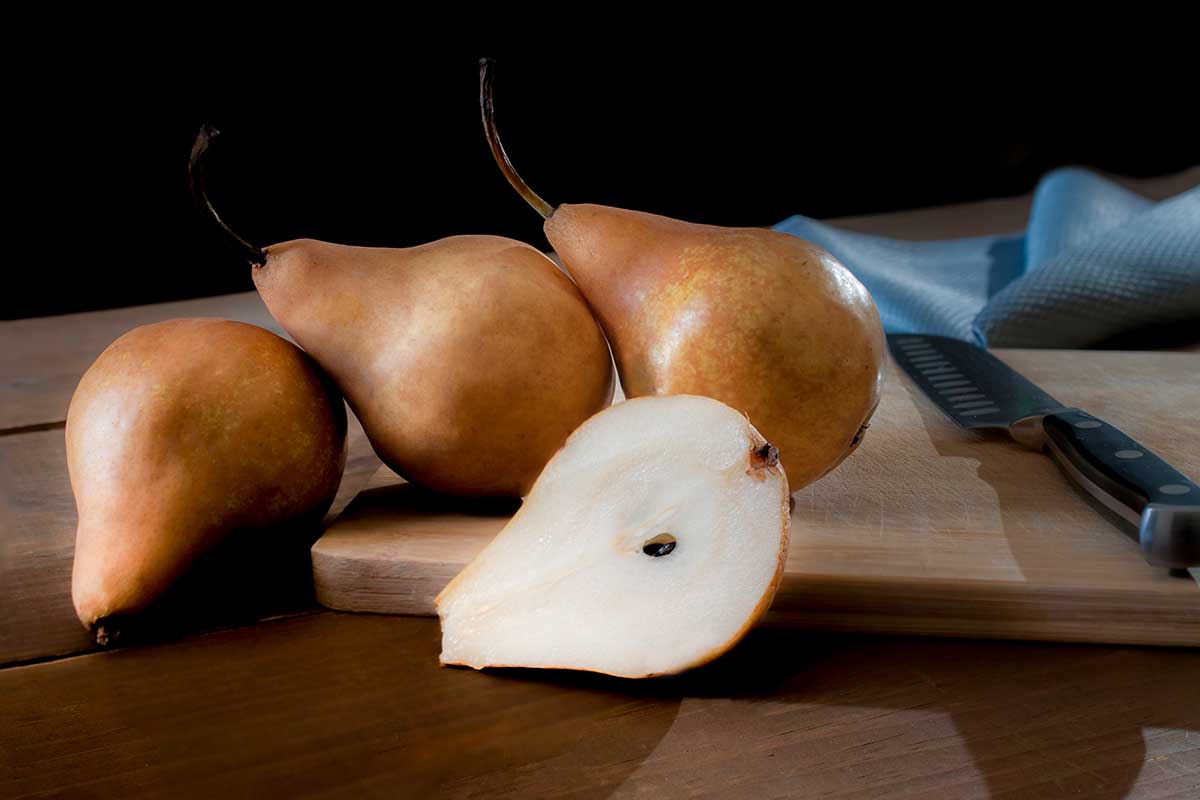
As a personal example, I have a lovely ‘Buerre Bosc,’ and my neighbor has a ‘Shenandoah.’
These are in different blooming groups, but somehow they make it work, and we both get to enjoy oodles of beautifully-shaped fruits in the fall.
Or maybe my tree is being pollinated by a different neighbor that I don’t even know about.
In other words, it’s best to ensure you have a pollinator by planting one yourself. That way, you aren’t taking any chances. But unless you live in a remote area far from anyone else, chances are pretty good that your tree will be pollinated.
If you can’t possibly fit a second specimen in your yard, choose a self-fruitful or partially self-fruitful type and cross your fingers.
To help this all make even more sense, let’s talk about how pollination works.
How Pear Pollination Works
As with many plants, pears rely on insects for pollination.
Honeybees, mason bees, some types of wasps, and flies are the most common pollinators, but many critters from the Hymenoptera, Diptera, and Coleoptera orders will do the job.
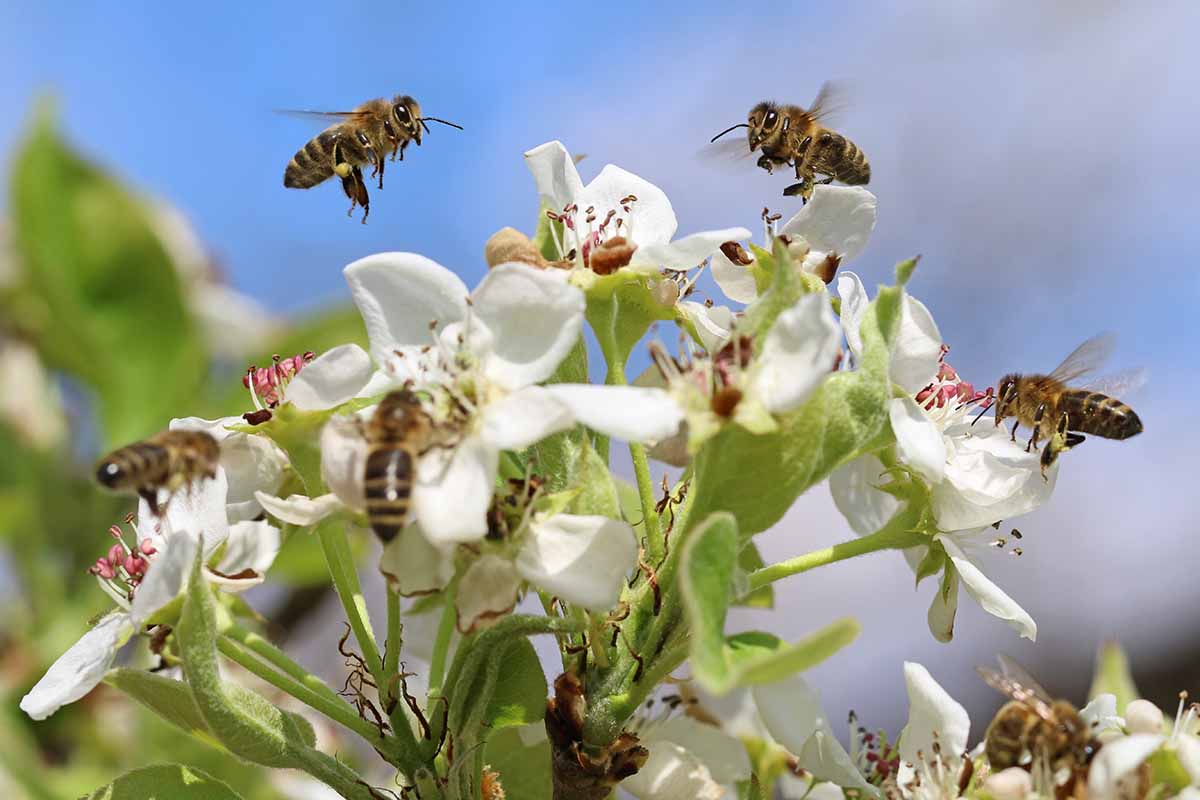
If you spray your plants for pests in the spring or if you have a wet, windy spring, you might not see enough pollination for your trees to develop fruit because pollinators will either be killed off, or they won’t be able to visit as many flowers as they usually do.
That’s why many experts recommend that you not spray for pests when trees are in flower.
Pear flowers are both male and female. That is, the plants are cosexual and each flower has both male and the female reproductive parts.
Each flower is made up of outer sepals, which look like little leaves, and these hold the petals.
Inside the petals are lots of little filaments topped with anthers. The anthers are the parts that hold the pollen that will be transferred to a stigma to complete fertilization.
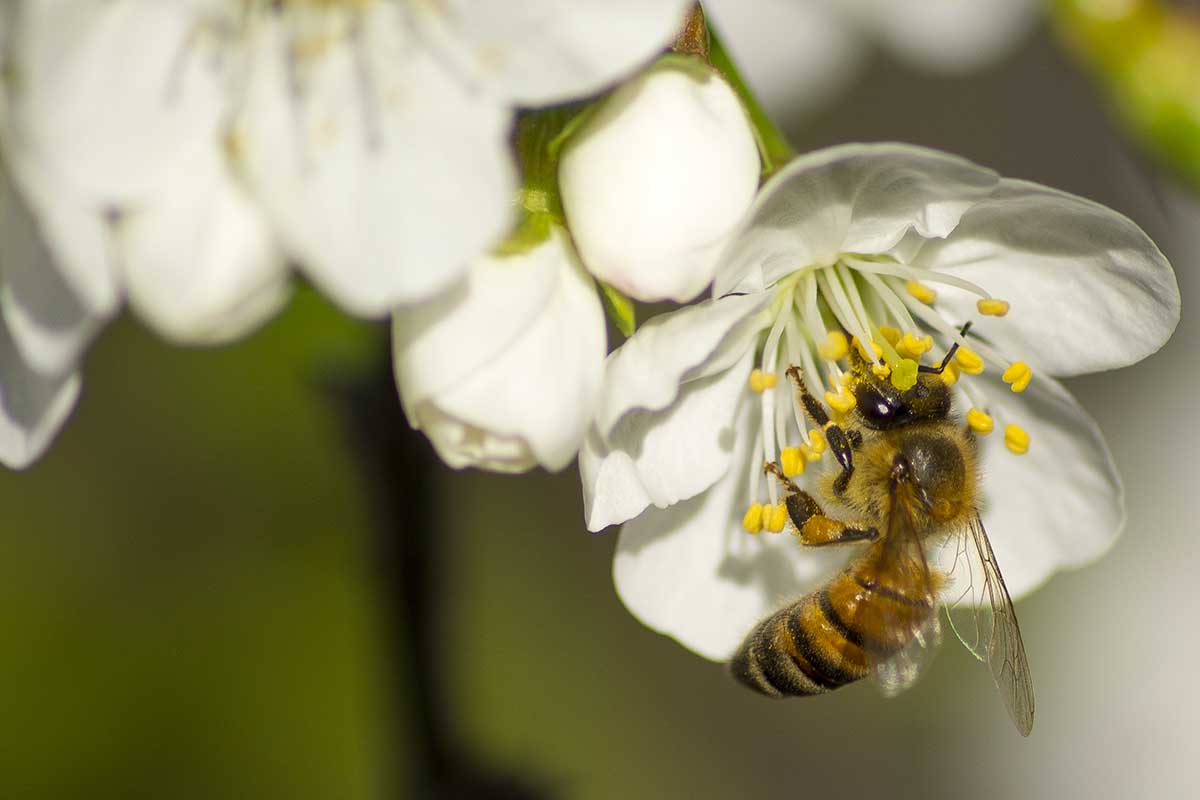
Five stigmas emerge from a disk at the base of the anthers.
The stigma, or the female part, is what receives the pollen. Once it does, the pollen works its way down to the ovary in a day or two, and fertilization occurs. The ovary is where the fruit will eventually develop.
When the flowers open, the stigmas are folded inwards, and the anthers burst open, a process known as dehiscence. As the flower matures, the stigmas tilt out, making them more available for pollination.
Now all the flower has to do is wait for a pollinator to come along.
Pear flowers don’t produce a ton of sugary nectar, so honeybees will pass them up in favor of more enticing fare. Since we rely on honeybees to pollinate so many of our crops, that can be a problem.
That might seem like a weird evolutionary tactic, but the trees were originally pollinated by native bees that don’t seek out sugar.
That’s why orchard growers rely on other bee species like mason bees since they don’t need sugary sweet nectar to be happy. Or, they might keep twice as many honeybees as they would for pollinating other fruit trees.
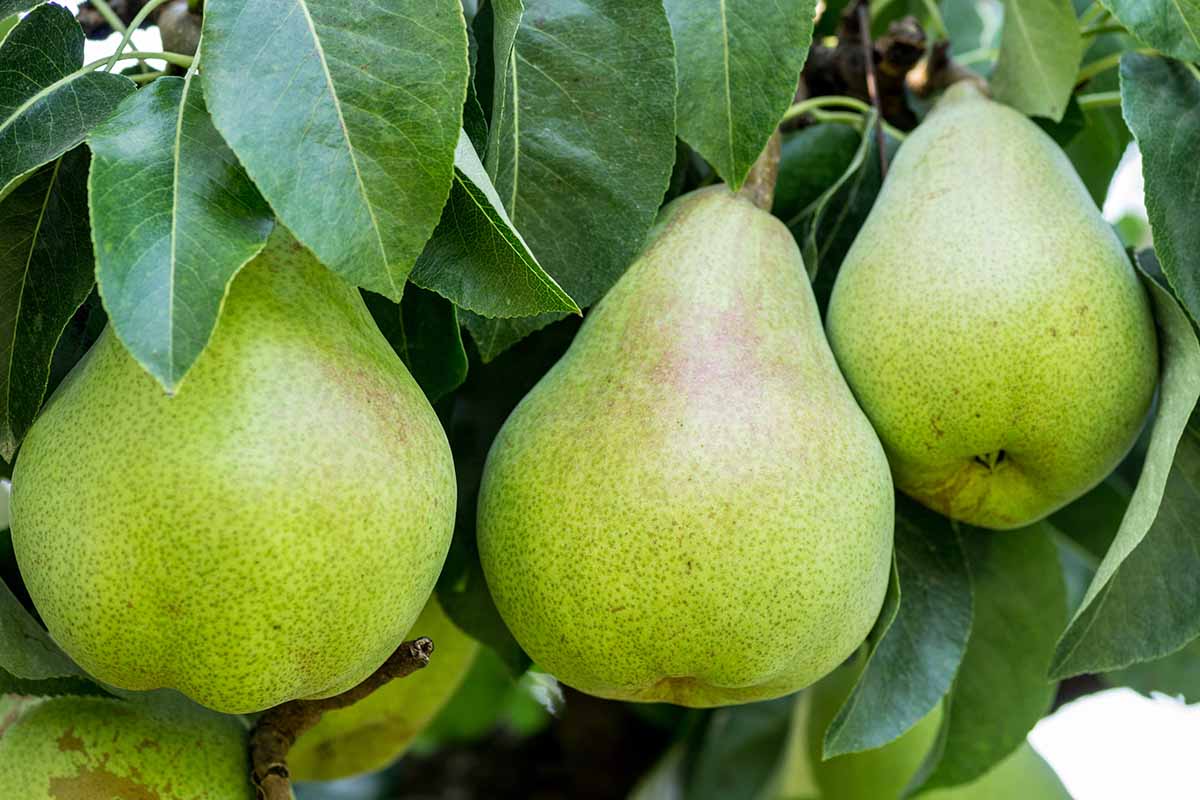
But it’s not just a matter of one insect visiting the flower. Each flower needs to be pollinated multiple times with pollen from another tree, unless the tree is self-fertile.
When a flower isn’t well pollinated, it may drop from the tree before it is mature, or the fruit will be deformed.
Well-pollinated fruits have more seeds and a better shape, and they will store longer.
Home growers don’t need to keep bees, but it never hurts to have some flowers growing in your garden to entice our insect friends.
We have a guide to 13 of the best flowers for attracting pollinators if you’re looking for some ideas.
There are a few pear trees that are exceptions to the partner requirement. These are partially or fully self-fertile and don’t have to rely on another tree for pollination.
But you will always see a larger harvest if your specimen has a pal.
Also, most self-fertile or partially self-fertile types need warm, dry weather to pollinate well, even more so than self-infertile pear trees, so gardeners in climates with cold, wet springs shouldn’t rely on a single tree to pollinate itself.
Bloom Time
Pears are categorized according to when they bloom in order to facilitate selection of the right partner. There are four generally accepted categories: early (group 1 or A), early to mid (group 2 or B), mid (group 3 or C), and last to bloom (group 4 or D).
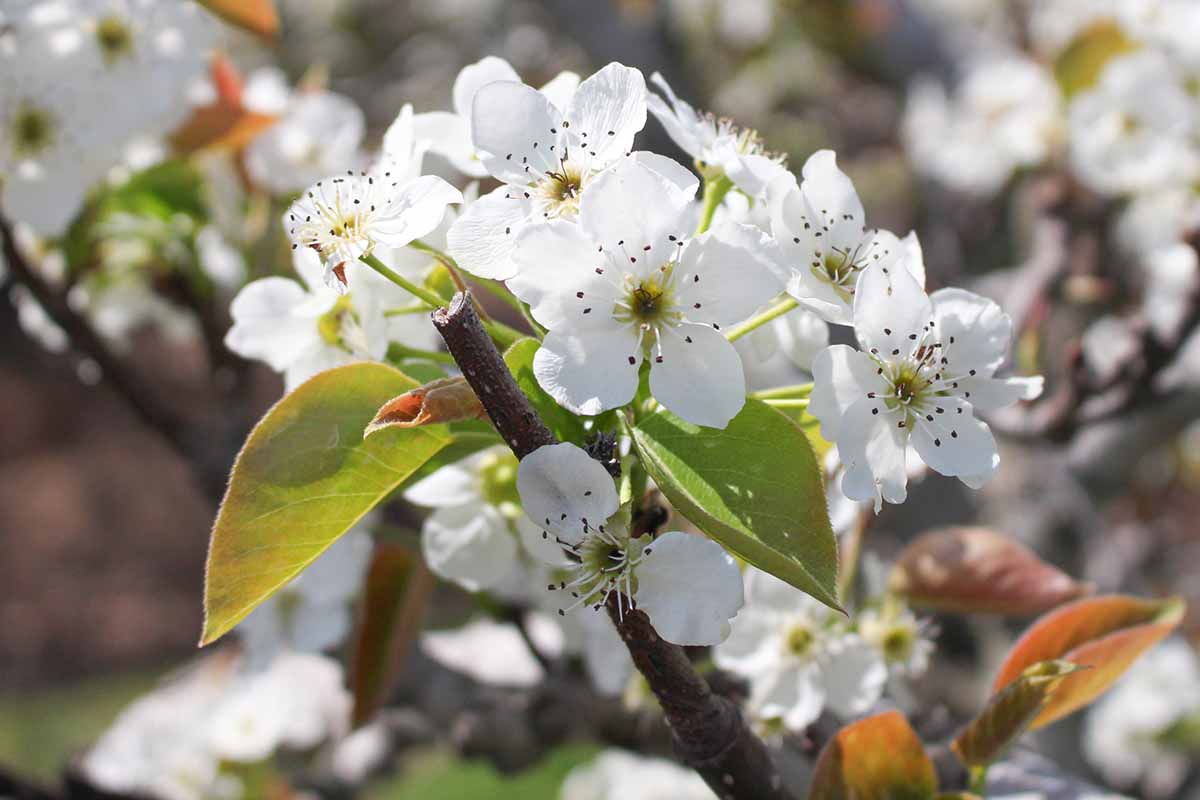
Having said that, there is no industry standard on how pears are categorized. Some people use numbers, and others use the letter designation. Some divide cultivars into six categories, some use five, and others just use three.
When you’re out shopping for a tree, the easiest thing to do is stick with one source’s designation.
If your local nursery uses the five-category system, stick with it rather than checking against multiple sources. Things can get confusing really fast otherwise.
Keep in mind that bloom time and ripening time are totally unrelated. A tree can bloom first thing in spring and the fruit will be some of the last to ripen.
Cultivars that have “early” in their name are usually referring to how early the fruit matures, not the bloom period.
Pear Cultivars to Select
As we mentioned, some pears are partially self-fruitful. This includes most Asian types.
A few European types, like ‘Early Gold’ and ‘Concorde,’ are entirely self-fertile.
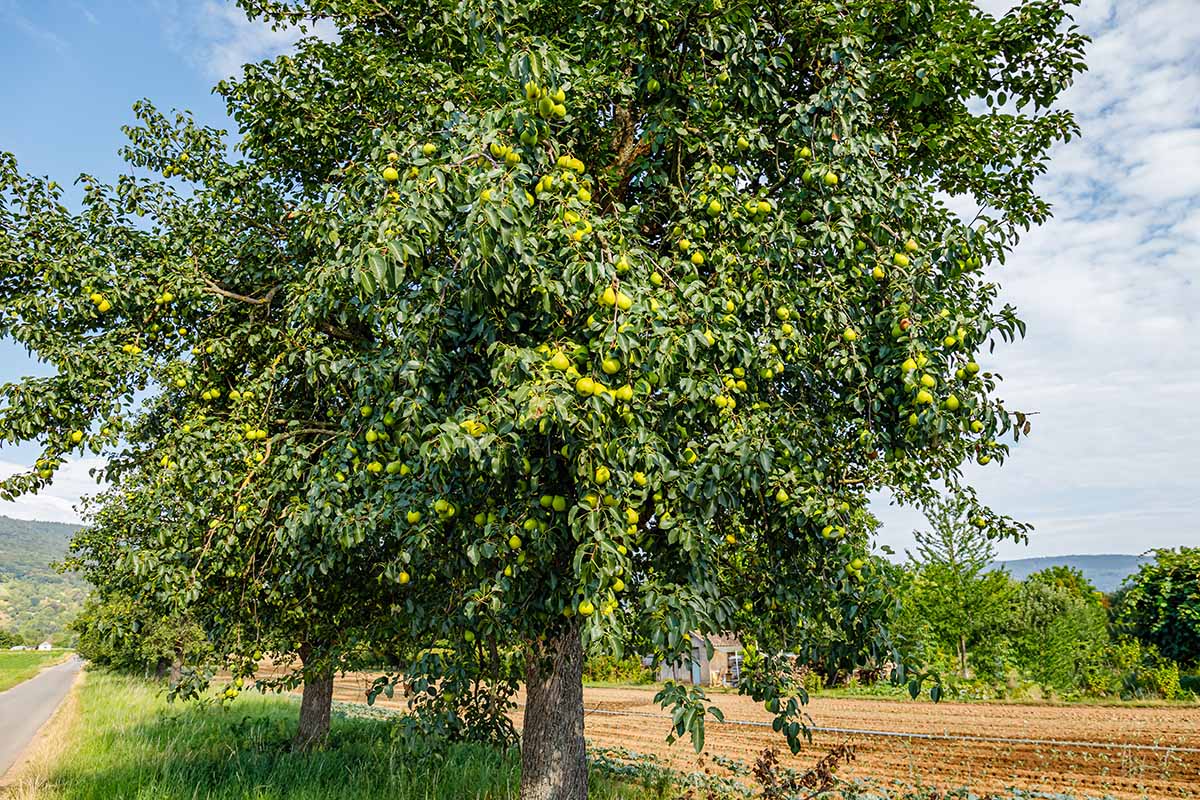
Asian and European pears will pollinate each other. However, all of them don’t bloom at the same time, so if you want one of each, you’ll need to be careful about which you select.
A tree cannot be paired with the same cultivar for pollination. It must be a different type. So a ‘Bosc’ can’t pollinate another ‘Bosc.’ Wouldn’t it be nice if things were that simple, though?
Those that have a long bloom time are often the best pollinators.
‘Bartlett’ is technically classified as a mid-season bloomer, but it usually starts early, and the blossoms last for a long time.
For that reason, it’s often recommended as a pollinator for all other European pears except early bloomers.
‘Kieffer’ is another European super pollinator that can both pollinate itself and most other varieties.
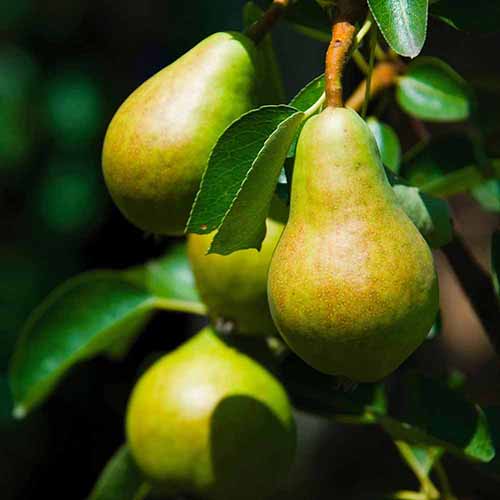
‘Bartlett’
If you want to skip the pairing selection process, just nab yourself a live ‘Bartlett’ tree in a three- to four-, four- to five-, or five- to six-foot height from Fast Growing Trees and then pick any other European type as a pal.
Some pears exhibit triploidy, which means the tree has three sets of chromosomes.
These can’t pollinate other pears, so if you want to grow one and produce fruit, you’ll need to plant a third tree for pollination.
Why would you bother with any of these? They tend to be more robust, produce larger fruit, and are often healthier.
‘Barland,’ ‘Buerre Hardy,’ and ‘Cadillac’ are all triploid European varieties.
Here are a few popular pairs from each blooming category. You can pair any of those in the same category together. You can also pair them with the category before or after them.
The only exception are those that are triploids. You can still plant these, but remember that you’ll need two other diploid trees to go with them.
Early Bloomers
Asian pears are usually the first to bloom. ‘Chojuro,’ ‘Housi,’ ‘Shinglo,’ ‘Shinko,’ ‘Shinseiki,’ ‘Ya Li,’ and ‘Yoinashi’ are all popular options.
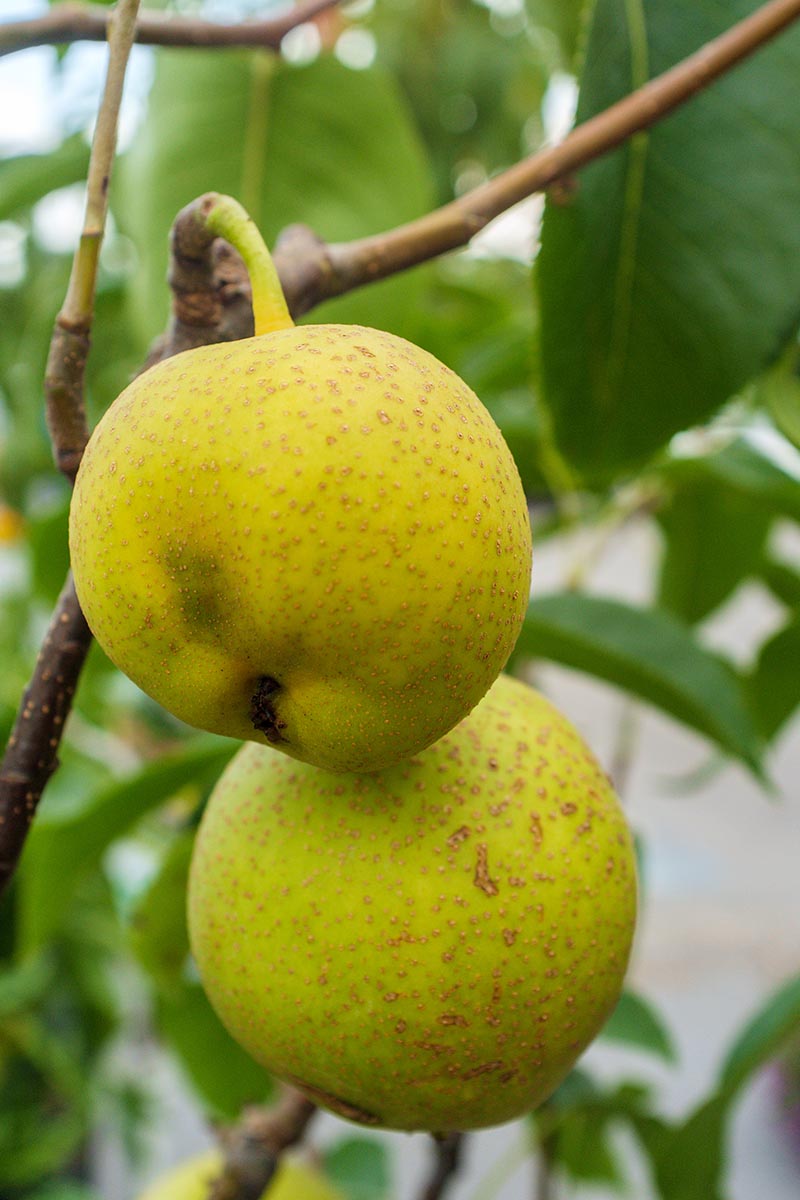
A few European types, like ‘Conference’ and ‘Louise Bonne of Jersey,’ will also bloom early.
If you’re looking for a stellar Asian pear, ‘Shinseiki’ is pretty hard to beat. This tree is a prolific producer, and the fruit are exceptional.
Eat them fresh for a crisp, apple-like texture, or store them for a few months and they will soften up.
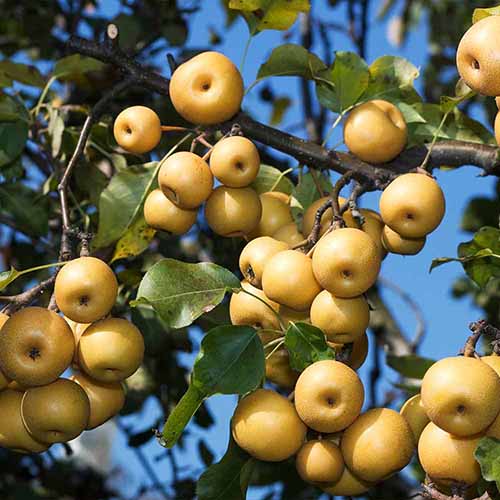
‘Shinseiki’
This is a dessert type, with a pleasantly sweet flavor. Fast Growing Trees carries it in a five- to six-foot size, which means transplants will start producing within a few years.
Early to Mid Bloomers
A few Asian types bloom later than their eager beaver counterparts. ‘Ichiban,’ ‘Kosui,’ ‘Nashi,’ ‘Nijiseiki,’ and ‘Shinsui’ are a few popular options.
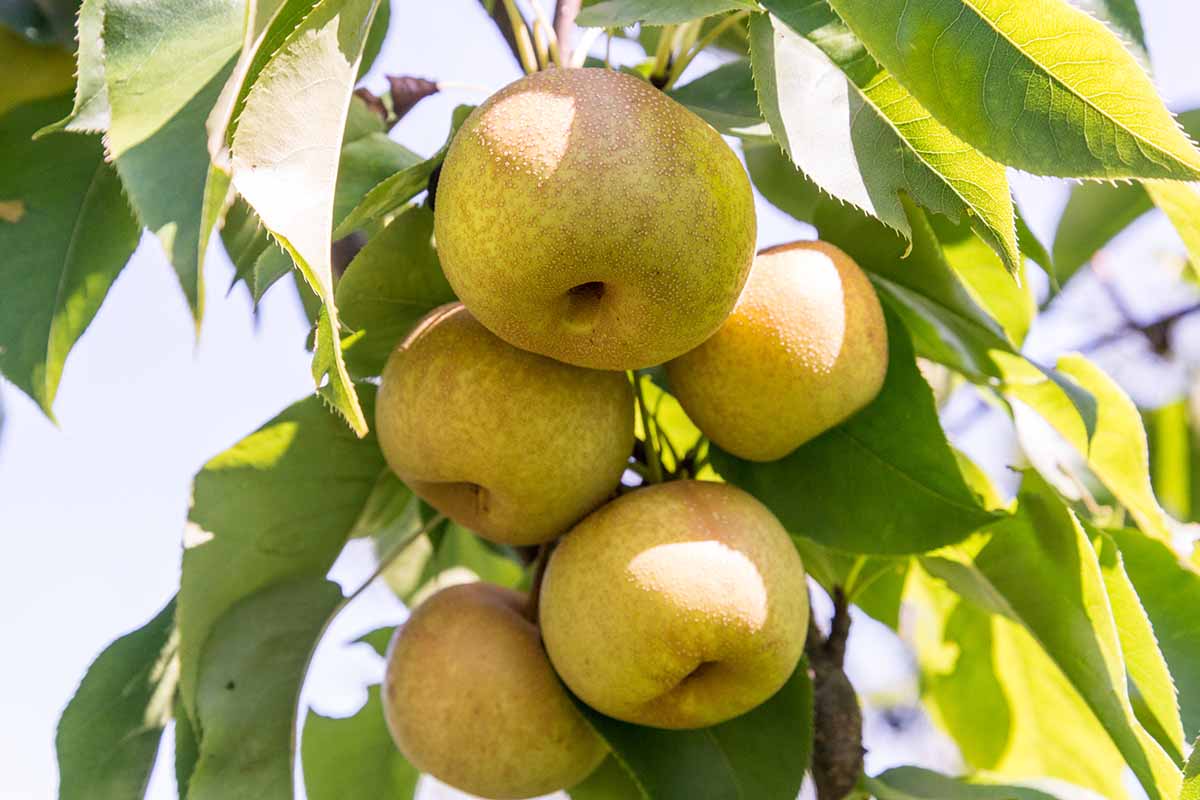
A few European types start blooming at this point, as well. ‘Beth,’ ‘Brandy,’ ‘Glou Morceau,’ ‘Kieffer,’ and ‘Winter Nelis’ are all ones to look for.
European trees like ‘Beurre Hardy’ and ‘Merton Pride’ also fall into this category, but they are triploids and can’t pollinate other trees. If you plant these, you’ll need another companion.
Imagine pairing a ‘Nijiseiki,’ with its wildly popular, sweet dessert fruits, and a sturdy, reliable ‘Kieffer,’ with its Asian-European hybrid fruits that have a mild, sweet flavor. It would be one heck of a combo.

‘Nijiseiki’
Pick up a ‘Nijiseiki’ at Fast Growing Trees in a four- to five- or five- to six-foot size, and grab it a ‘Kieffer’ friend in a four- to five-, five- to six-, or six- to seven-foot size, also available at Fast Growing Trees.
Mid Bloomers
The mid group is the largest category of European cultivars.
- ‘Aurora’
- ‘Bartlett’
- ‘Cannock’
- ‘Colette’
- ‘Concorde’
- ‘Doyenne du Comice’
- ‘Early Gold’
- ‘Flemish Beauty’
- ‘Harrow Crisp’
- ‘Honeysweet’
- ‘Hosui’
- ‘Humbug’
- ‘Invincible’
- ‘Korean Giant’
- ‘Maxine’
- ‘Onward’
- ‘Sensation’
- ‘Shenandoah’
- ‘Rescue’
- ‘Ubileen’
‘Merton Pride’ is a European triploid, so if you choose it, pick a third tree to join the group.
Late
Varieties that are late to the game when it comes to bloom time are European types like:
- ‘Anjou’
- ‘Bosc’
- ‘Buerre Bosc’
- ‘Clapp’s Favorite’
- ‘Comice’
- ‘Flemish Beauty’
- ‘Hellens Early’
- ‘Onward’
- ‘Orcas’
- ‘Red Clapp’s Favorite’
‘Cadillac’ is also in this group, but it is triploid.
Find the Perfect Pear Pairing
One of my favorite ways to cope with the long winters is to dream up plant combinations. Sometimes half the fun is in the planning.
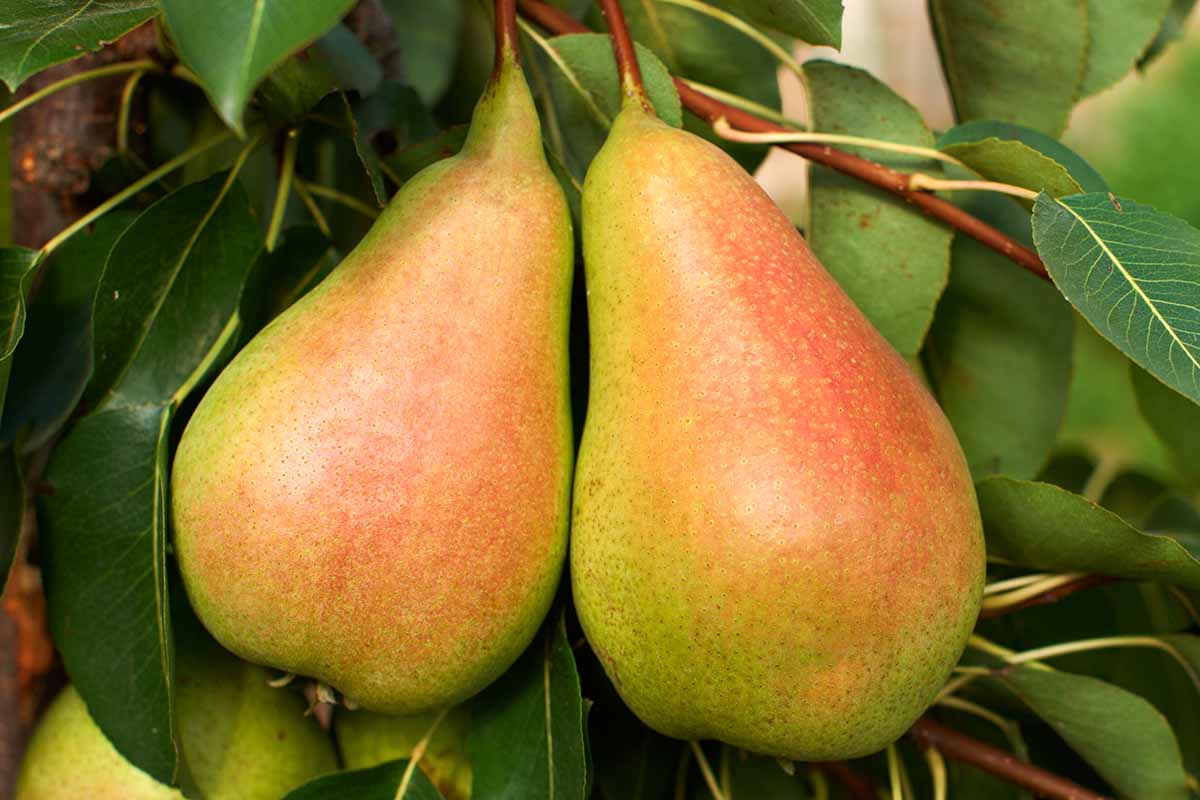
If you’re thinking of adding pears to your garden, take some time to pick the perfect combination, not just in terms of bloom time but by picking two that will serve your purposes best.
So, which two (or three) varieties do you think you’ll grow? And most importantly, what do you plan to do with your fruits? Do you have a favorite recipe? Tell me all about it in the comments. I can only make so much fruit leather and canned pears!
Pairing and planting is only the beginning of your journey. If this guide helped you to get started, you might find a few of our other guides to growing pears useful along the way. Check these out next:

